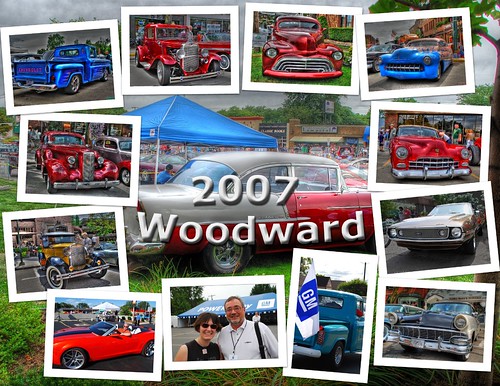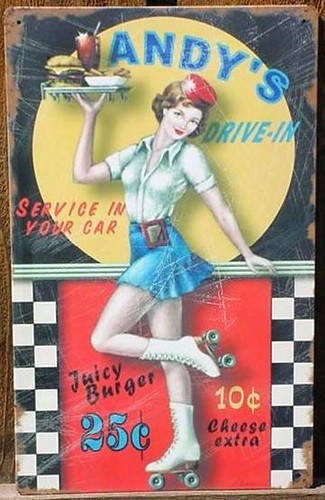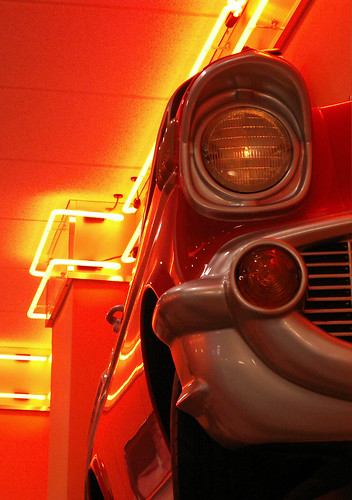NASH BRIDGES:
The San Francisco Cuda!
By: Mike Marino

San Francisco. My adopted hometown. Frisco to the oldtimers. Ess Eff to the uninitiated. The streets of San Francisco have been traveled by shanghiers, muggers, thieves, writers, poets, dharmabums, beatniks, hippies, sinners and saints. I lived there for many rock n' roll years and like those before me, found solace and comfort in her shroud of fog and those wonderful bridges. The Golden Gate Bridge, the Catherine Hepburn of bridges, stretches from Marin to the tip of the peninsula, while the Bay Bridge, the heavy metal Godzilla of bridges, spans the bay from Oakland to The Embarcadero. Magnificent structures that shuttle commuters to and fro, from frenzy to fury at times, to the slow and go madness of the rush hour that makes travel halt and congeal like a slow moving line of caramel by the sea, until it heats up, thins out and races along again at 60 plus miles per hour. The Golden Gate and the Bay Bridge, standing as sentinels over the bay. Beautiful landmarks, yes, but they're not the only bridges in San Francisco. Not by a long shot. Let's face it, San Francisco just wouldn't be San Francisco...without it's Nash Bridges!

In the 1980's Don Johnson introduced us to the art deco architecture wonders of Miami, not to mention an audacious flair of manly men wearing perturbing pastels head held high with pride, and yet still exuding an aura of machismo. Those oh so '80's fashion statements copulated with scripts and storylines of modern day piracy, and in the process gave birth to a TV wild child that had us on the edge of our seats with bedtime tales of smugglers, sleazeballs of every persuasion and the Evil Empire of Florida, represented by Columbian drug cartels and their Merry Men plying their trade in the rum soaked seas of the Caribbean on televisions cult classic, "Miami Vice". Fashionistas Crockett and Tubbs, made "Vice" an instant cop-pop culture hit, but soon Sonny Crockett tired of wearing pink, and decided to escape the beach culture of Miami, and seek Bohemian peace in the Victorian quietude of the San Francisco Hills. It was against this most Rice-A-Roni of backdrops that he morphed into Nash Bridges trading in his cigarette boat for one of the most recognized Motor City muscle monster mo-sheens to ever grace and race up and down Lombard Street in San Francisco, let alone, Woodward Avenue in Detroit. A drop dead lemon drop, lemon twist yellow 1971 Hemi 'Cuda.
Don Johnson and Cheech Marin were the affable star-partners of this show. Johnson, a Crockett without a Tubbs, and Marin, a Chong-less Cheech, were flawless as buddy-pal-partner cops, Nash Bridges and Joe Dominguez. Crime fightin' television with not only a sense of humour, but more importantly, a sense of flair and high fashion. That sense of fashion was most prevelant on the the street as the crime fightin' Nash and Joe banged around the Bagdad by the Bay in the 'Cuda. Bear in mind, Amigo, this is not just any old Cuda. This one had more class than Princess Grace. Hell, this one had panache, and not just any old panache either. This one had Nash Panache.

In 1964, Plymouth came out with it's first of the line Barracuda's. Ford was getting ready to unleash the Mustang from the muscle corral, and Plymouth's horsepower hind-end was up against the asphalt wall. They needed something to out distance the Ford monster before it hit the pavement, and they needed it fast. The engineers took their trusty Plymouth Valiant, touched up the frontend and gave it a rear window that wrapped around. Then they gave it a shot of medicated muscle, and from the automotive womb emerged, kickin' and screamin', the infamous Plymouth Barracuda. The name alone conjured up images of a man eating fish ready to draw first blood and tear into a victims tissue and render them, well, you know...dead. The Barracuda was ready to strike and hit the sales floor and the asphalt two months ahead of the dreaded Mustang, but even with it's headstart, the Barracuda was not the sales beast Plymouth thought they had created, and the Mustang was officially crowned king of the wild horsepower realm.
The 1970's brought a muscle makeover to the fallen Plymouth hero, and the Barracuda was given a hemi transplant and enough power to be damn near psychotic on the street. Woodward Avenue in Detroit was the testing ground of this new wild child, and the re-born 1964 beast, become known affectionately as simply, the 'Cuda. High performance with a demonic grin and a rock and roll attitude.
In the Nash Bridges storyline, the car was given to Nash when his brother, Bobby, went to Vietnam. He never came home and ended up instead as MIA. As a result, Nash and Joe had one of the hottest rides on the tube. The color chosen for the show was "lemon twist yellow", which was actually one of the original 18 colors available for the Cuda. Incidentally, most of the 'Cuda's seen on the show were in reality 1970's that were made up to look like '71s, if your a purist that will have great and deep, if not a downright religious meaning for you. The rest of us, however, just close our eyes and pretend we're at the wheel of pop cultures most famous Cuda and racing down the hills towards Fishermans Wharf and wearing a really cool jacket fresh out of Nash Bridges closet. Only in San Francisco can high fashion and hemi horsepower wear flowers in it's hair.



Classic Cars, Rock n' Roll, Elvis, Drivein Movies & Route 66! Kerouac, The Beats, Haight Ashbury, Easy Rider & Vietnam!

The Roadhead Chronicles goes from the Cold War Fifties Pop Culture of classic cars and rock n' roll to the spaced out Spare Change Sixties of Vietnam and Hells Angels. Not the usual look at the era, instead It's written by someone who lived it and spent a life of being on the road from his beach bum days in Honolulu to the glitz and dangers of the Sunset Strip in LA, and his purple hazed and double dazed days in North Beach and the Haight Ashbury in San Francisco. The Roadhead Chronicles also looks at the history of Route 66, Roadside Neon Culture and old diners and dives!

Mike Marino writes in an offbeat and irreverant style with a beat and a cadence that is all his own. His writing style has been compared to John Dos Passos, John Steinbeck and Terry Southern and one reviewer likened him to Frederick Lewis Allen on acid! Readers and critics call the book "wickedly wonderful", "delightfully weird" and "automotively sexy."!!
